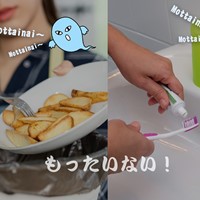What Is an Imabari Towel in Japan – And Why Is It So Special?

This page contains affiliate links.
The following article is contributed by Japarcana.
If you’ve ever used a truly great towel, you probably know the difference it makes. Most of the time, you don’t really think about your towels—they’re just there, doing their job (or, let’s be honest, sometimes not doing it well). But then there’s the Imabari towel.
Coming from Japan’s Ehime Prefecture, these towels have earned a reputation for being absurdly soft, incredibly absorbent, and—maybe surprisingly—worth every penny of their higher price tag. So, what exactly makes them so special? Why do people often compare them to Egyptian cotton?
If you dig into it, you’ll find it’s a mix of history, craftsmanship, and some very particular Japanese attention to detail. It’s not just marketing talk—it’s actually rooted in how these towels are made and cared for.

Imabari City
Inside Imabari Towels: What Makes Them Special
1. The Story Behind Imabari
2. What Makes Them Different?
3. Why Imabari Towels Make Thoughtful Gifts
4. Why Imabari Towels Cost More (Are They Worth It?)
5. How to Spot a Real Imabari Towel
6. Where to Buy Imabari Towels
7. Unexpected Ways You Can Use Imabari Towels
8. How to Care for Your Imabari Towel
9. Final Thoughts: Worth the Hype?
10. Looking for Imabari Towels?
1. The Story Behind Imabari
Imabari is a small coastal city in Ehime Prefecture, Japan—quiet, a little out of the way, and not exactly the kind of place you’d expect to become the heart of a national industry. But for over a century, it has been known for one thing: towels. And not just any towels—these are soft, absorbent, and crafted with a level of care that’s hard to find. Many would say they are among the best in the world.
The story starts in 1894. A man named Heisuke Abe—who had already been working with cotton flannel, known locally as Iyo cotton—set up four looms in Imabari and started producing towels. It wasn’t a big operation. And to be honest, it didn’t take off right away. At the time, places like Osaka, Hyogo, and Aichi were the real heavyweights in Japan’s towel industry. Imabari? It was remote, had fewer connections, and didn’t yet have the same technical know-how. Early Imabari towels were, well, not great.
But something shifted in the early 20th century. In 1910, an engineer named Tsunezaburo Fumoto developed an improved loom that significantly advanced Imabari’s capabilities. Over the next few decades, the region slowly caught up—first improving yarn-dyeing methods, then refining the quality of weaving. By 1921, Imabari had overtaken several major regions to become Japan’s second-largest towel producer. And by 1960, it claimed the top spot. That part feels like a bit of a miracle—though maybe it was just perseverance and a lot of trial and error.
Still, progress wasn’t steady forever. Like many industries, Imabari’s towel production was hit hard during the economic downturns of the 1970s and ’90s. At its peak in 1991, the region produced over 50,000 tons of towels. But by 2009, that number had plummeted to under 10,000 tons. Imported towels flooded the market, and local producers struggled. What had once been an industry of nearly 500 companies was now down to about 100. Things looked... bleak.
That’s when the sense of urgency really kicked in. In 2006, the Shikoku Towel Manufacturers Association decided to act. They launched the Imabari Towel Brand Project—not just to save the industry, but to redefine it. A year later, the now-familiar red, white, and blue Imabari logo was introduced, designed by creative director Kashiwa Sato. And something about that moment worked. Three years later, in 2010, production began to rise again.
Today, Imabari is back on the map—not just as a towel producer, but as a symbol of Japanese craftsmanship. The towels are still made with care, often using spring water from the Sojagawa River, and still tested for softness and absorbency before earning the official Imabari seal. You may have seen that seal before without realizing what it stood for. Now you know.
And while the path wasn’t linear—and certainly not easy—it’s a story that feels quietly remarkable. Not because it was flashy, but because it wasn’t.

Imabari Logo
2. What Makes Them Different?
Let’s look at what actually makes an Imabari towel different. Not just nice, but noticeably better. Because it isn’t just one special ingredient—it’s a bunch of choices that, when combined, create something you probably didn’t realize a towel could be.
1. The Cotton
You might not think much about cotton quality, but once you’ve felt long-staple cotton, it’s hard to go back. That’s the kind often used in Imabari towels. The fibers are longer, smoother, and stronger, which gives the towel that refined softness—and it helps prevent that worn-out, fuzzy texture that some towels get over time.
People sometimes compare it to Egyptian cotton, and sure, the softness might be similar. But with Imabari, the weave is tighter, maybe more… intentional. Not stiff, just structured. It feels like it was made to last, not just to impress you once and fall apart later.
2. The Weave
Then there’s the weave itself. You’ve probably had a towel that just kind of pushes water around instead of drying you. It’s annoying. Imabari towels are tightly woven—sometimes with double-twisted yarn—which makes them more absorbent. And more durable. You’ll notice the difference pretty quickly.
What’s interesting is that they don’t feel overly thick. Somehow they strike a balance—substantial but not bulky. That middle ground makes them feel usable every day, not like a “special occasion” towel you’re afraid to ruin.
3. The Water and Dyeing Process
Now, the water. This one might seem like a small detail, but it plays a big role. Imabari uses naturally soft water for its dyeing process. That softness helps the dye adhere better to the fabric, so colors stay vibrant after multiple washes. And you don’t get that stiff, crunchy texture that can develop in towels washed in hard water. Instead, the fabric stays smooth, almost silky.
Even if you’ve never thought about water quality, you’d notice the result. The towels keep their color longer, and they feel good—consistently. No weird fading, no rough spots.
4. The Finishing Touches
And then there’s the finishing. Many Imabari towels go through what’s called a “milling” process. They’re washed and brushed several times before they’re packaged, which removes loose fibers. You don’t have to go through that phase where the towel sheds lint or feels stiff until it’s broken in. It’s soft and ready from the first time you use it.
That might seem like a small thing, but it matters. Especially when you’ve bought a towel expecting it to feel luxurious—and it doesn’t, at least not right away. Here, it just does.

3. Why Imabari Towels Make Thoughtful Gifts
Not every gift needs to be flashy or expensive to feel meaningful. Sometimes, it’s the quiet, everyday items—made exceptionally well—that leave the biggest impression.
1. They offer lasting comfort
At first glance, gifting a towel might seem a bit underwhelming—after all, everyone has towels, right? But Imabari towels are different. Once experienced, their softness and reliability become clear. They provide a quiet kind of comfort that lasts, which might explain their popularity as gifts in Japan.
2. Perfect for many occasions
Imabari towels are given for all sorts of events—weddings, new homes, baby showers. It’s partly practical since towels are used every day by everyone. But it’s also about the intention behind the gift: offering something useful yet durable, made with genuine care.
3. Crafted with exceptional attention to detail
These towels are made using soft water from the Soja River, which helps make the cotton fluffier and the colors more natural. The science behind it might be complicated, but the end result feels undeniably pleasant against the skin.
4. A meaningful name
Interestingly, “Imabari” sounds similar to “ima, naoru” in Japanese, loosely meaning “get well soon.” Not everyone may notice this, but it adds an extra thoughtful layer when choosing an Imabari towel as a gift.

4. Why Imabari Towels Cost More (Are They Worth It?)
Okay, let’s be upfront: Imabari towels aren’t cheap. A good bath towel can cost anywhere from $50 to $150 or more, depending on size and brand. That price tag? Yes, it might make you hesitate. Totally understandable.
But here’s why you might want to think twice before dismissing them:
1. Durability
Cheap towels tend to fray, lose absorbency, or just fall apart after a year or two. Imabari towels? If you take care of them, they can last for decades. Some people even pass them down through generations. It’s like that one comfy pair of shoes you just can’t get rid of.
2. Absorbency
These towels don’t just sit on your skin—they actually pull moisture away. It’s a subtle difference at first, but once you notice it, you kind of can’t un-notice it. Makes drying off feel quicker, or at least more satisfying.
3. Luxury Feel
Wrapping yourself in an Imabari towel feels like a small indulgence. It’s like the difference between a fast-fashion cotton shirt and a perfectly tailored one. Both get the job done, but one just feels nicer. You might even find yourself looking forward to drying off just because of it
That said, not everyone needs a towel this fancy. If you usually grab whatever’s on sale, the price might seem steep or even unnecessary. But if you’re someone who appreciates those small daily luxuries—well, this towel might just change the way you think about something as simple as drying off.
So, are they worth it? Maybe yes, maybe no. It really depends on what you value. But sometimes splurging a little can make everyday moments feel a bit better.
5. How to Spot a Real Imabari Towel
With the rising popularity of Imabari towels, imitations have become more common. Some products are labeled as “Imabari-style,” but they may not meet the stringent standards set by the Imabari Towel Industrial Association. Here's how to distinguish authentic Imabari towels:
1. Official Certification
One of the most reliable ways to spot the real deal is the label. Genuine Imabari towels come with a red, white, and blue circle logo—usually on a small gold or silver tag—that’s issued by the Imabari Towel Industrial Association. It might seem like just branding, but it’s actually tied to strict quality tests. For instance, there’s something called the “Five-Second Rule,” where a towel has to absorb water within five seconds to pass. Not all towels can manage that—and if there’s no official tag, it likely didn’t even take the test.
2. Weight & Weave Quality
There’s a certain feel to an authentic Imabari towel. They use low-twist yarns, which helps keep the texture soft without making the towel bulky. It’s a bit unexpected—light in the hand, but still dense and absorbent. Some people say it feels “different,” though they can’t quite explain why. That’s usually a good sign.
3. Instant Softness
Here’s something you notice right away: a real Imabari towel feels soft straight out of the box. There’s no break-in period, no stiffness to wash out. The use of soft water from the Soja River during production plays a part in that. It’s the kind of softness that feels intentional—not overly treated, just naturally smooth. If a towel feels rough at first, it’s probably not the one you're looking for.
6. Where to Buy Imabari Towels
Finding authentic Imabari towels can be a little tricky sometimes—there’s just so many knockoffs out there. If you want to make sure you’re getting the real thing, here are some places you might want to check out:
Official Imabari Towel Brand Stores
If you ever get the chance, visiting these stores in Imabari City or certain department stores in Japan is probably your safest bet. You’ll find the full range of products there, and you can be pretty confident everything’s genuine.
Certified Online Retailers
Buying online can be really convenient, but you do want to be careful. Look for the official Imabari logo or certification to be sure. For example, you might want to check out Japarcana. They offer authentic Imabari towels and seem to really focus on quality, which is reassuring when you can’t see the towel in person.
Specialty Japanese Gift Shops
If you’re outside Japan, some Japanese gift shops carry Imabari towels. These stores usually handpick authentic items and sometimes share useful tips on how to care for your towels, which is a nice bonus.
High-End Department Stores
Upscale department stores, whether in Japan or elsewhere, sometimes stock Imabari towels in their home goods or luxury sections. The prices might be higher, but you’re generally safe on quality and authenticity.
Boutique Home Goods Stores
You might also find Imabari towels at boutique shops that focus on artisanal or luxury home textiles. These places often highlight craftsmanship, so you could stumble upon some unique or limited-edition towels.
Wholesale Distributors
If you’re buying for business, like for retail or corporate gifts, wholesale distributors or direct deals with manufacturers might be worth exploring. You’ll probably get better pricing and more options tailored for bulk orders.
Before you buy, just take a moment to check for the official Imabari towel certification mark. It’s a small detail but really important—makes sure you’re investing in a towel that meets those high standards Imabari is famous for.
7. Unexpected Ways You Can Use Imabari Towels
Imabari towels—they’re well known for bath time, but honestly, you might find yourself using them for way more than that. Once you get your hands on one, you could start noticing all sorts of new reasons to keep them around. Here are some ideas you might like (or maybe haven’t thought about yet):
Face Towels
These are really gentle on your skin, which is great if you have sensitive skin or follow a skincare routine. They’re soft enough that you might actually look forward to drying your face—sounds a bit odd, but it’s true!
Gym Towels
Lightweight yet super absorbent. You’ll appreciate how they don’t weigh you down during a workout but still soak up sweat like a champ. It’s impressive once you try it.
Baby Towels
If you have a baby or are buying a gift, these towels are perfect. They’re soft enough for delicate, tiny skin—something you might want to keep in mind if you care about comfort (and who doesn’t?).
Blankets & Throws
Some Imabari brands make bigger towels that you can actually use as throws or light blankets. They’re breathable enough for warmer weather but cozy when it gets chilly—sort of like having a luxury wrap handy.
Towel Blanket Trend
You might’ve heard towel blankets are becoming a bit of a niche obsession. People rave about how comfy and versatile they are, though you might still wonder if it’s really something you need or just a quirky indulgence.
So, even though towels usually seem straightforward, Imabari towels surprise you with how versatile and enjoyable they can be. They’re not just practical—they’re a little bit luxurious, and honestly, fun to experiment with. You might end up loving them more than you expected.

8. How to Care for Your Imabari Towel
Imabari towels are known for their softness, absorbency, and quiet luxury. But like anything carefully made, they need a bit of care to stay that way. Don’t worry—it’s nothing complicated. Just a few mindful habits can really extend the life and comfort of your towel.
Let’s walk through them.
1. Always Wash Before First Use
It’s tempting to use a brand-new towel right away, especially when it feels so soft and fresh. But we recommend washing it first. If it’s a gift and you won’t be using it anytime soon, you might still want to give it a wash before storing. That helps prevent uneven fading or long-term creasing. A quick rinse with water around 40°C (104°F) is perfect—no need for hot water.
2. Wash With Lots of Water—And By Itself
This one’s easy to overlook, but important. Towels, especially high-quality ones like these, need space in the machine. More water means the towel can move freely, and that helps rinse away buildup more thoroughly. Try to avoid washing it with clothes or anything abrasive. Even if your machine measures water automatically, it doesn’t hurt to bump it up manually for a better clean.
3. Use a Laundry Net (Really, It Helps)
It might sound like an extra step, but using a polyester laundry net can actually make a big difference. It reduces the buildup of minerals and friction on the fabric. Over time, this keeps the fibers in better shape and helps your towel last longer. It’s a small effort with a pretty big payoff.
4. Go Easy on the Fabric Softener
We all like the idea of soft towels. But ironically, fabric softener can make absorbent towels... less absorbent. It leaves behind a coating that blocks the cotton from doing what it does best. If your towel starts to feel a bit stiff, using softener once in a while is okay—but avoid making it part of your regular routine.
5. Dry Promptly After Washing
Once the spin cycle finishes, it’s best to move quickly. Leaving a wet towel sitting around can flatten the pile and create that slightly sour smell we’ve all run into at some point. Worse, it can encourage mold and bacteria. Drying your towel as soon as possible helps preserve both texture and cleanliness.
6. Shake Before Hanging
This step is surprisingly effective. Just give the towel a few quick shakes before hanging it up—it helps the crushed fibers stand back up. Ideally, dry it in a shaded, well-ventilated spot. Direct sunlight might feel like a shortcut, but it can cause fading and stiffening over time.
7. Using a Drum-Type Washer? Some Tips
Drum-style washers can be a bit rougher on towels during the wash cycle since they use less water and rely more on friction. But the good news is, the drying method in drum dryers is pretty gentle—tumbling airflow helps fluff the towel back up. If your machine lets you, try using a longer wash time and increase the water volume to reduce wear.
8. Choose Neutral Detergents
To keep that signature absorbency intact, stick with neutral detergents—preferably ones without fabric softeners or fluorescent brighteners. These are gentler on the fibers and won’t interfere with how the towel naturally absorbs moisture.
You don’t have to do everything perfectly, of course. But even a few of these habits can help your Imabari towel stay soft, fresh, and reliable for years to come. And honestly, once you get used to that kind of comfort, it’s hard to go back.

9. Final Thoughts: Worth the Hype?
You might be skeptical at first. How good can a towel really be? But once you try one, you’ll get it. There’s a reason why Japanese households, luxury hotels, and even the Emperor of Japan’s residence use them.
Are they absolutely necessary? Probably not. But are they a little treat that can make your everyday life nicer? Definitely.
If you’re curious, start with a small hand towel (they’re more affordable) and see if you notice the difference. Because once you go Imabari, it’s hard to go back.
10. Looking for Imabari Towels?
Are you looking for Imabari towels? At Japarcana, you can find a wonderful selection of towels and towel sets that make perfect gifts. Click here to explore our collection.
References:
https://www.imabaritowel.jp/en
https://www.gov-online.go.jp/eng/publicity/book/hlj/html/202009/202009_06_en.html
https://japanobjects.com/features/imabari
https://www.ikeuchi.org/en/about-us/craftsperson/imabari_towel_history/

















